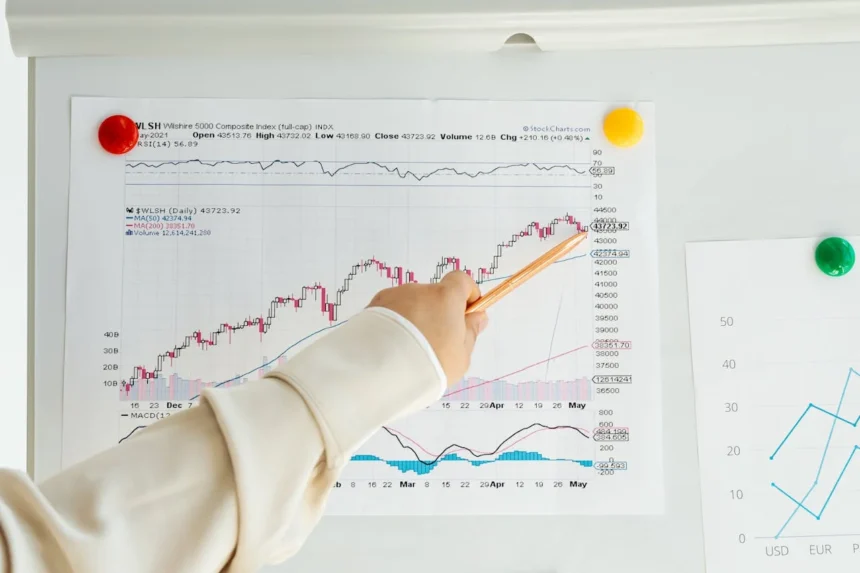Introduction: From Boredom to Budgeting
Financial literacy is arguably one of the most critical life skills, yet for many students, it remains one of the most tedious subjects in the curriculum. Relegated to dry textbooks and abstract formulas, concepts like compound interest, debt management, and investing often fail to resonate, leaving young people ill-equipped for the financial realities of adulthood. How can a student truly grasp the impact of a mortgage without seeing it in action, or understand credit card interest before experiencing its consequences?
This is precisely where the Ed-Tech revolution steps in, transforming what was once daunting into something dynamic and engaging. Before we delve into the exciting world of budgeting apps, stock market simulators, and interactive lessons, let’s address the core question: how does technology help students learn financial literacy graphically and effectively? By moving beyond theoretical concepts to vivid, actionable, and visual learning, technology removes the fear and abstract nature of money, turning complex financial principles into relatable, even fun, experiences.
Ultimately, a deep dive into financial management helps students understand and answer the fundamental economic questions that underpin all market activity.
The Failure of Traditional Methods: Why Financial Education Needed an Upgrade
For decades, financial education often fell short, not due to a lack of importance, but a flaw in its delivery:
- Abstract Concepts, Disconnected Realities: Trying to teach debt, interest rates, or inflation using only lectures and worksheets often leaves students struggling to connect these abstract ideas to their future financial lives. The numbers on a page rarely convey the real-world impact.
- No Real Consequences, No Real Learning: Traditional methods offer a consequence-free environment a missed question on a quiz carries little weight compared to a real missed payment. This detachment prevents students from understanding the genuine stakes involved in financial decisions.
- The Stress Factor Amplified: Money is inherently a stressful topic for many. When taught through dry, intimidating methods, this stress is amplified, creating an aversion rather than an eagerness to learn. Students often graduate without the confidence to tackle their finances.
Gamification and Simulation: Making Money Management a High Score
Technology’s greatest contribution to financial literacy education is its ability to create immersive, consequence-free learning environments through gamification and simulation.
- Simulation as a Sandbox: Ed-Tech platforms act as digital sandboxes where students can manage virtual money, experiment with budgeting, make investment choices, and even navigate debt repayment scenarios. They experience the highs and lows of financial decisions without risking real-world loss, learning from mistakes in a safe space.
- Quests, Badges, and Rewards: Applying classic game mechanics earning badges for successfully paying off virtual debt, unlocking levels for hitting savings goals, or competing on leaderboards dramatically increases student engagement. This transforms passive learning into an active pursuit of financial mastery.
- Interactivity and Immediate Feedback: Unlike waiting days for a graded assignment, these platforms provide instant feedback. Students immediately see the outcome of a spending choice or an investment, reinforcing concepts and allowing for real-time adjustments to their strategies. This feedback mechanism is essential to deep learning and behavior change.
Visualizing Success: How Technology Helps Students Learn Financial Literacy Graphically
This is where the power of technology truly shines, transforming abstract numbers into compelling visual narratives. This is the heart of how does technology help students learn financial literacy graphically.
- Customized Dashboards and Data Tracking: Visualize a personal finance dashboard that automatically logs all the virtual dollars spent, saved, or invested. Ed-Tech tools transform raw data into easily digestible formats:
- Pie charts visually break down spending categories.
- Bar charts show adherence to budget targets over time.
- Heatmaps quickly highlight financial weak spots or areas of overspending. These personalized visual analytics provide students with immediate, clear insights into their financial behavior.
- The Power of Compound Interest Graphs: Few concepts are as powerful, yet as difficult to grasp abstractly, as compound interest. Technology makes it tangible. A student can input a small monthly savings amount and instantly see a soaring, exponential growth curve over decades. This vivid visual demonstration makes the magic of long-term saving palpable. Conversely, they can plot credit card debt to witness the frightening, accelerating downward spiral of interest accrual.
- Risk and Volatility Plots: Stock market simulators, often powered by real-time market data, allow students to invest virtual money and plot their portfolio’s performance. They instantly see the volatility the peaks and troughs of the market, teaching them about risk tolerance, diversification, and long-term versus short-term gains far more effectively than any textbook definition. This is a key part of how technology helps students learn financial literacy graphically, allowing them to visualize economic principles in action.
Tools in Action: Apps and Ed-Tech Platforms that Deliver Empowerment
The market is rich with innovative tools bringing financial literacy to life:
- Virtual Stock Trading Platforms: Many educational platforms offer simulated stock market games where students manage a virtual portfolio with real market data. This teaches them about investing, market dynamics, and risk management in a practical, hands-on way.
- Interactive Budgeting Apps: Designed for students, these apps simplify budgeting by categorizing expenses, setting spending limits, and tracking progress towards savings goals. They often incorporate elements from popular real-world budgeting philosophies (like zero-based budgeting or the 50/30/20 rule) into an accessible format.
- AI Tutoring and Personalization: Advanced Ed-Tech utilizes Artificial Intelligence to adapt lessons based on a student’s individual learning style and pace. If a student struggles with understanding insurance, the AI can provide tailored explanations and scenarios, ensuring that instruction is personalized and highly effective, making complex topics digestible.
Conclusion: Gaming for Growth: The Future of Fiscal Responsibility
Technology has unequivocally proven that financial education doesn’t have to be intimidating; it can be interactive, engaging, and deeply personal. By replacing static text and abstract numbers with dynamic, visual data and immersive simulations, Ed-Tech has successfully bridged the gap between theoretical knowledge and practical application.
Ultimately, understanding how does technology help students learn financial literacy graphically and interactively is the key to closing the financial knowledge gap. It empowers students not just with information, but with practical experience, confidence, and the foundational skills needed to navigate their economic futures responsibly, opening doors to advanced career paths in finance and economics.
Frequently Asked Questions (FAQs)
Q1: What is the age students should be when they begin learning financial literacy using tech?
A: Financial literacy concepts can be introduced surprisingly young. Basic concepts like saving for a goal can be taught to elementary students through simple gaming apps. More complex topics like budgeting, credit, and investing are best suited for middle school and high school, where students can engage with more sophisticated simulators and apps.
Q2: What is the key distinction between conventional and technological financial education?
A: The primary distinction is the involvement and practice. Conventional ways are usually passive, text-based, and theoretical, with no immediate feedback or practical outcomes. Tech-based education is active, interactive, visual, and experiential, allowing students to learn by doing in a consequence-free simulated environment, often with instant feedback and visual progress tracking.
Q3: Are these financial apps and simulators secure for student data?
A: Reputable educational apps and simulators designed for schools prioritize data security and privacy, often complying with regulations like COPPA (Children’s Online Privacy Protection Act) in the US. They often work with anonymized data in simulations and do not gather their personal financial data. Educators and parents must research and choose platforms with strong privacy policies.
Q4: Can parents use the same tech tools at home to teach their children?
A: Absolutely! Many of the principles and even specific apps used in classrooms are suitable for home use. Parents can utilize budgeting apps (often simplified versions). These chore-tracking apps link to allowances, or family-friendly investment simulators, to teach financial concepts practically and engagingly outside of school hours.
Q5: What financial concepts are best taught using visual graphs and simulations?
A: Concepts that are inherently abstract or grow exponentially are best visualized. These include compound interest (for both savings and debt), investment growth and volatility, budget allocation (e.g., spending pie charts), debt repayment schedules, and the impact of inflation over time. Graphs transform these complex ideas into easily digestible, impactful visuals.




